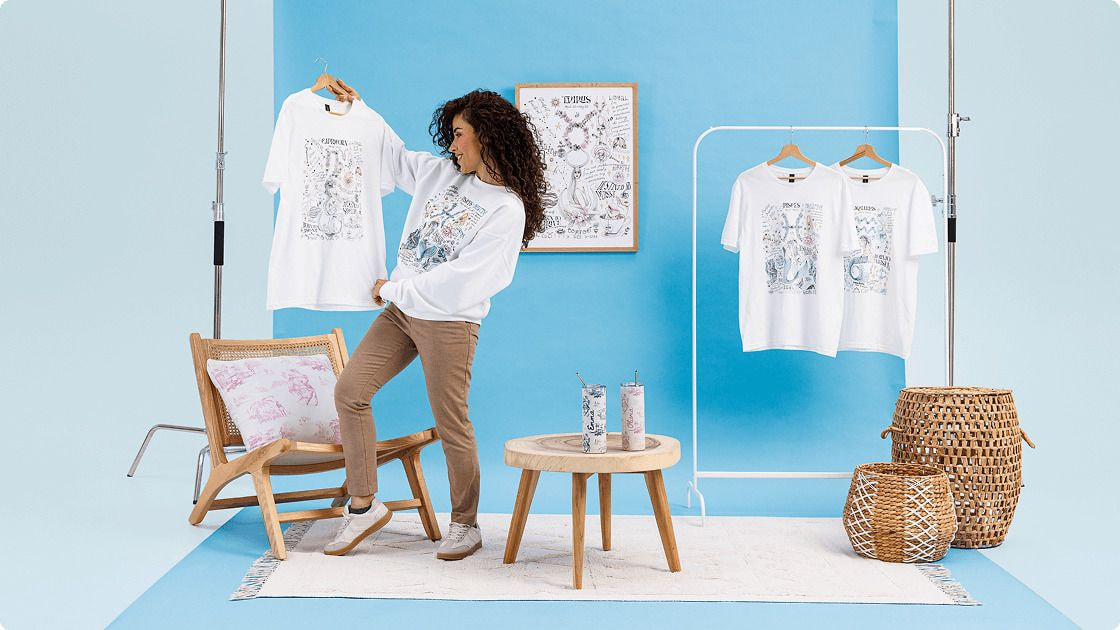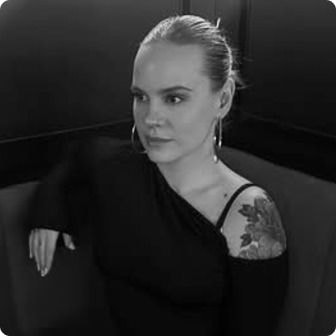Table of contents
Launching a POD store is thrilling, but the early decisions can make or break your success.
To help you launch with confidence, we gathered insights from Printful’s experts in marketing, design, operations, and merchant success. Their lessons, tips, and “wish I knew” insights reveal what beginners often miss and how to build a business that lasts.
This expert roundup collects clear POD tips you can apply from day one – plus the common mistakes to avoid along the way.
1. Finding your niche and products

One of the most critical early decisions a new POD seller makes is choosing the right niche and products.
Some experts point to timing and merchandising discipline to get it right.
“Instead of focusing on trends, operate on a seasonal, always-relevant cadence. Start holiday drops ~6 weeks before the date so customers can move through the full AIDA journey. Match product to season: swimwear in summer, wrapping paper in Q4. Spotlight the newest collection, keep your home page to a max of 3 scrolls, and reset quickly for the next theme.”
– Emīls Potāpovs, Senior Merchant Success Manager
eCommerce strategist experienced with top Shopify stores and agencies, helping brands scale by optimizing performance, uncovering growth opportunities, and building long-term profitability.
This advice highlights a truth many beginners overlook: shoppers buy relevance, not clever designs.
While seasonal timing works, other experts recommend narrowing even further to micro-communities.
“The real money is in becoming the go-to brand for highly specific groups. Instead of making generic “dog lover” designs, become the brand for German Shepherd owners who hike. Instead of broad “teacher” designs, focus on kindergarten teachers who love true crime podcasts.
These micro-communities are underserved, passionate, and willing to pay premium prices for designs that truly “get” them. They also become your best marketers.”
– Agnese Bite, Head of Product Design
With 11+ years at Printful, Agnese leads the Product Design Team, creating intuitive, effective experiences that keep merchants engaged and supported.
Agnese’s point is critical: mass appeal is overrated. The most profitable POD businesses often thrive by connecting with passionate, identity-driven communities.
“Instead of trying to sell to everyone, focus on a niche where you understand your buyers’ passions, problems, or identity. That connection makes it easier to create designs that resonate and build a loyal customer base. Validate your niche with real demand by checking trending searches, active communities, or proven bestsellers.”
– Sanija Smidberga, Product Marketing Manager
Leads product marketing strategy, driving global campaigns on products, seasonal events, pricing, and shipping to support merchant growth.
While some trends are fleeting, they’re powerful tools if you target them in time.
“Virality is the cheapest traffic hack you’ll ever find. Spot what’s blowing up on TikTok, Instagram, or memes in your niche, and put your own spin on it fast. The goal isn’t perfection, it’s speed. Catching a trend early can give you more exposure in a week than paid ads in a month.”
– Kristina Rekunova, Product Marketing Manager
Whether you lean seasonal, micro-community, or trend-driven, success depends on showing up consistently.
“Find your audience – your products need an audience. If you already have a community or platform, start there. If not, go where the buyers are!
And stay consistent. Publishing your first product is just the beginning. Successful store owners continually add new designs, product variations, and techniques. Don’t stop at step one.”
– Mariss Liepa, Senior Conversion Rate Optimization Manager
Dedicated to turning visitors into successful store owners by guiding their journey from first click to long-term growth in the print-on-demand ecosystem.
Taken together, this is practical print-on-demand business advice for choosing a niche, launching your first products, and building momentum.
Read more: Print-on-demand product launch checklist


2. Designing products and building a brand
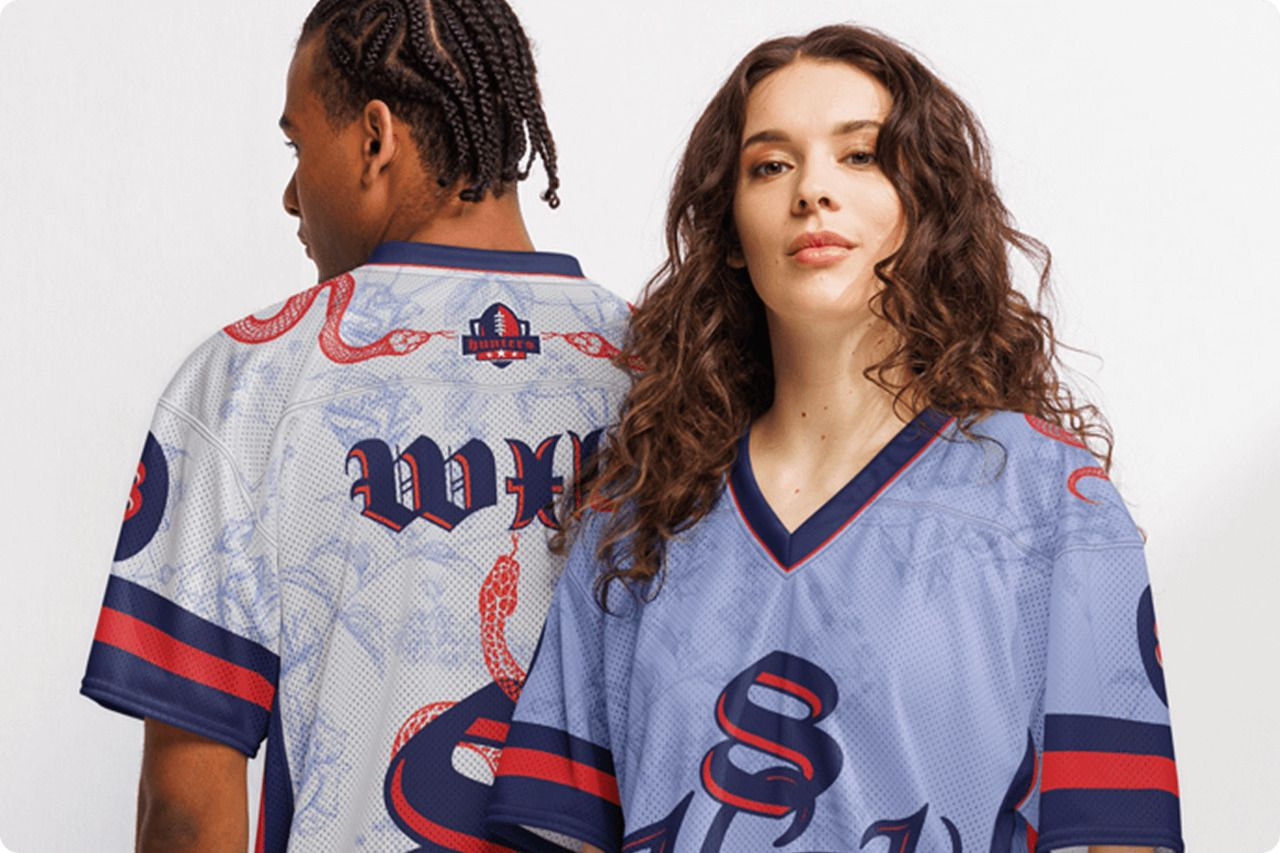
Once you’ve locked in your niche and products, the next challenge is design. In a crowded market, clever isn’t enough – your designs must connect emotionally.
“The biggest difference between designs that sell and designs that don’t is emotional connection. Most POD sellers get trapped in the “clever concept” mindset, making designs about what they think is witty or aesthetically pleasing.
Your design should make someone stop scrolling and think, “That’s so me” or “I need people to know I think this way.” Emotion drives the purchase decision.”
– Agnese Bite, Head of Product Design
That connection doesn’t happen accidentally. It’s about building a cohesive story across your catalog.
“Successful stores usually obsess over cohesion: mockups, designs, and marketing are treated as one story, not separate tasks. They pick mockups that fit the buyer and channel (clean, straight-on for marketplaces; lifestyle and UGC for a brand site and ads), keep backgrounds and models consistent so the catalog feels intentional.”
– Valts Feldbergs, Platforms & Integrations Lead
Valts leads ecosystem and platform partnerships, overseeing integrations with major platforms like Shopify, Wix, and TikTok Shop to expand merchant sales opportunities.
To complete your brand story, think beyond graphics. A cohesive custom clothing line helps your brand look polished and professional.
Read more: How to start a small clothing business from home
Visual consistency feeds directly into branding. Without a clear message that resonates, even the sharpest designs and best photography won’t get customers to pull out their wallets.
“Ads, SEO, PR, and every other paid marketing channel are great. But they’re nothing without a message that resonates with people. Brand is the message that moves people to give you their money.”
– David Hooker, Brand Director
As the Head of Brand, David leads brand strategy and communications, combining storytelling and creative leadership to help merchants connect with global audiences.
The catch is, none of these elements guarantees an instant hit. It takes persistence.
“The market has shown us that true success comes from the willingness to keep experimenting and refining your designs until you create a winner. In this business, a winning design is often born from a dozen tries. Keep on experimenting!”
– Alex Saltonstall, CEO of Printful
As CEO of Printful, Alex drives strategy and partnerships to strengthen the POD ecosystem and support merchant growth.
When that winning design comes together, the final step is ensuring it looks just as good in real life as it does on screen. The right fulfillment method makes your design shine on the product and meets customer quality expectations.
“Want to create a design for your new clothing line and start selling right away?
Print on Demand allows it, but it’s important to match the customization technique with your design because no one technique is best for everything! Each technique has its pros and cons, and it’s important to select the technique that will best showcase your designs on a specific garment.”
– Zane Levsa, COO
As COO at Printful, Zane leads Operations, Supply Chain, and R&D, focused on giving merchants the best balance of product quality, speed, and selection to help them build successful brands.
Read more: How to start a clothing brand step by step
“Pro tip: If you’re planning to make your own shirt, embroidery works best on sturdy fabrics. Intricate designs with many details belong on jackets, hoodies, or backpacks, not lightweight tees.”
– Ilze Andersone, R&D Project Manager
With over 8 years of embroidery expertise, Ilze ensures efficient production and high-quality results so merchants can offer premium embroidered products.
Strong design, brand cohesion, and production choices set the stage. But to grow, sellers need a storefront that showcases their work and converts interest into sales.
3. Setting up your store and picking platforms
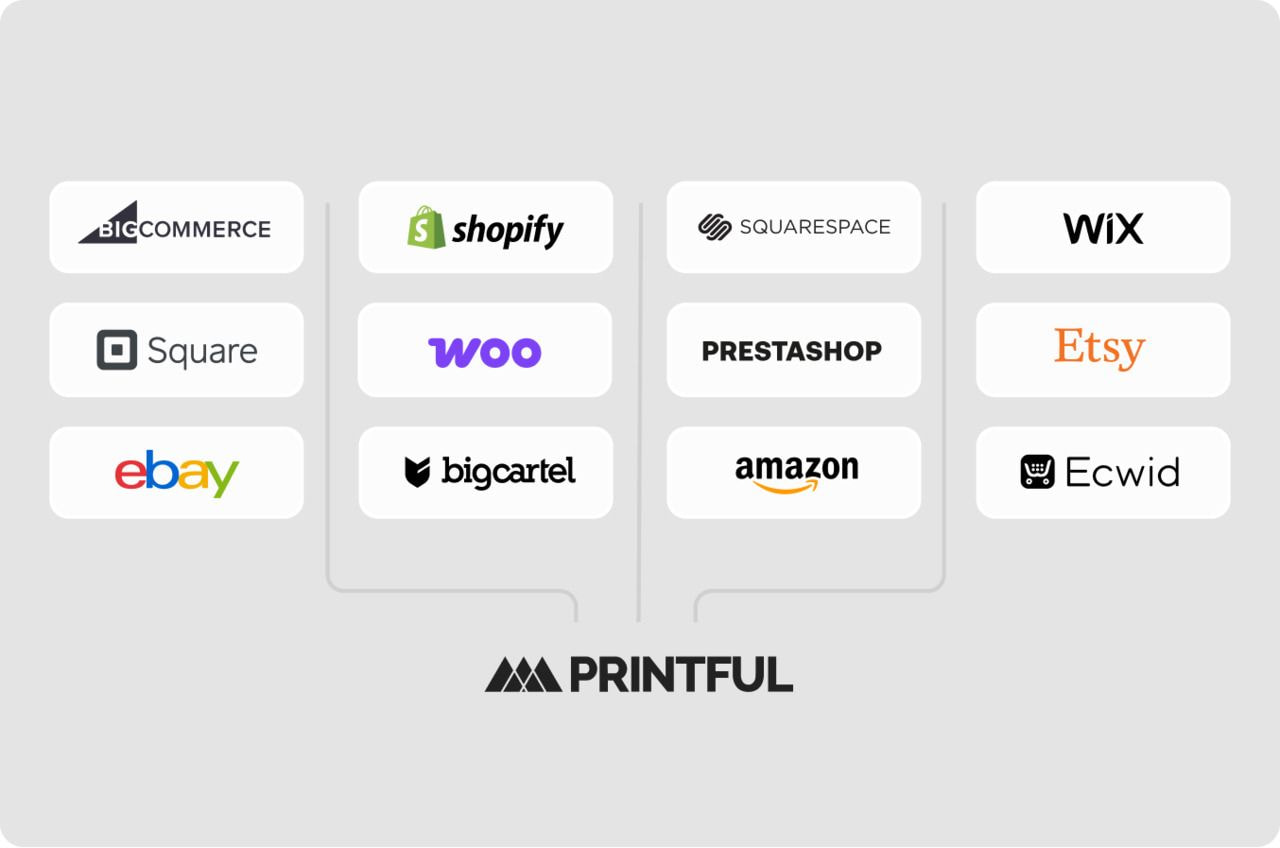
Once your designs are ready, the next big decision of starting a POD store is where and how to sell the products. There isn’t just one “right” path.
“Start from strengths and goals. If there’s an existing audience and a desire to build brand equity and lifetime value, launch a standalone store for control over data, bundling, and retention. If there are many strong designs but a limited audience, you should lean on marketplaces to tap into built-in demand and learn quickly.
Many sellers run a hybrid: marketplaces for discovery and cash flow, the brand site for repeat purchases and higher margins.”
– Valts Feldbergs, Platforms & Integrations Lead
This flexibility is what makes Print on Demand so powerful. Test the waters on a marketplace with built-in traffic or dive straight into building your own brand.
But success doesn’t come from a one-time setup. Treating your store as a living, evolving project keeps it thriving.
“Consistency is the most overlooked detail in setting up a POD store! Growing a store, regardless of the marketplace you choose, requires that you spend some time on it each day. It’s dynamic, so you have to be dynamic, too!
This could mean publishing new products, researching trends, adjusting and optimizing titles, testing new products, adjusting pricing, new ads or promotional campaigns, or following up with customers.”
– Katie Fitzsimmons, Ecosystem Partner Manager
An expert leading marketplace partnerships by aligning integrations, showcasing seller value, and ensuring POD merchants are equipped to scale on major platforms.
Small, steady actions build habits that compound. And by focusing your energy on a single sales channel at the start, you give yourself the best chance to break through.
“If you’re a beginner merchant, pick one channel and go all in: your job is to crack that channel. Don’t spread yourself thin. Think of it as a probability game – the more experiments you run, the higher your odds of hitting a winner. Traffic isn’t luck; it’s consistency and focused testing.”
– Kristina Rekunova, Product Marketing Manager
Of course, building a great POD store takes more than just traffic. Your pricing and packaging shape how customers perceive your brand.
“Successful stores usually price from the unit economics up and protect premium perception. They calculate all-in costs (base, print, shipping, fees, expected returns, ad spend), set a healthy margin, and position a slightly higher base price to leave room for promotions. It’s easier to drop the price than to raise it.
Set small early discounts to kick-start sales without teaching customers to wait for endless promos.”
– Valts Feldbergs, Platforms & Integrations Lead
You don’t need to get everything perfect at once. Start with a platform that fits your goals, stay consistent with your store management, and price with intention.
Once your storefront is in place, the next question is how to get people to find it.
Read more: How to launch an online store as quickly as possible
4. Marketing and SEO

Getting visibility is one of the biggest challenges when starting a POD store. The smarter approach is to identify and focus on where your audience already spends time.
“Prioritize 1 high-leverage acquisition channel, then double down with an experimentation mindset driven by data. Real growth comes from identifying 1 channel where your audience already spends their time and then methodically testing until you unlock repeatable traction. Too many new POD sellers overstretch themselves.”
– Dāvis Sārmiņš, Director of Growth Marketing
Growth marketing leader with over 10 years of experience helping brands scale through product launches, digital strategy, and paid media, delivering measurable ROI in both B2B and B2C.
Beginners often assume customers will simply stumble upon their store, but discovery is rarely organic.
“The biggest mistake I see new POD sellers make is treating their store like a secret they hope people will just ‘discover.’ Discovery doesn’t happen by chance – it happens by design. My #1 tip is to focus on intent-based traffic first. Pair that with a simple email capture from day one, and you’re building compounding traffic instead of chasing viral hits.
Organic search + email = sustainable growth, even on a tight budget.”
– Rihards Grunte, SEO Manager
With more than 20 years in SEO, Rihards leads a team of specialists focused on strategy, execution, and innovation to drive sustainable growth for eCommerce businesses.
SEO isn’t like ads that stop when the budget runs out. It’s an investment that continues to pay dividends.
“SEO is the difference between chasing buyers and having them find you. SEO gives you lasting visibility. Paid ads stop the second you turn them off; SEO keeps bringing in customers month after month without ongoing spend.
That’s huge for POD merchants where margins are slim – organic traffic means more profit per sale.
Use Google Search Console, Etsy Stats, and social analytics to see which keywords and content drive results. Update, test, and improve over time – algorithms and customer behavior always evolve.”
– Laura Želvytė, Head of Content
As Head of Content, Laura leads global SEO, video, social, and localization efforts, building scalable strategies that drive growth and help POD merchants succeed.
Search behavior shapes how customers discover products everywhere.
“Pro tip: SEO isn’t just Google. Etsy, TikTok, Instagram, and Pinterest all function as search engines. Optimize across them for more doors into your store.”
– Laura Želvytė, Head of Content
The thread running through all this is simple: pick one channel, commit to it, and let intent-based search and email build your foundation.
5. Social media and building a community
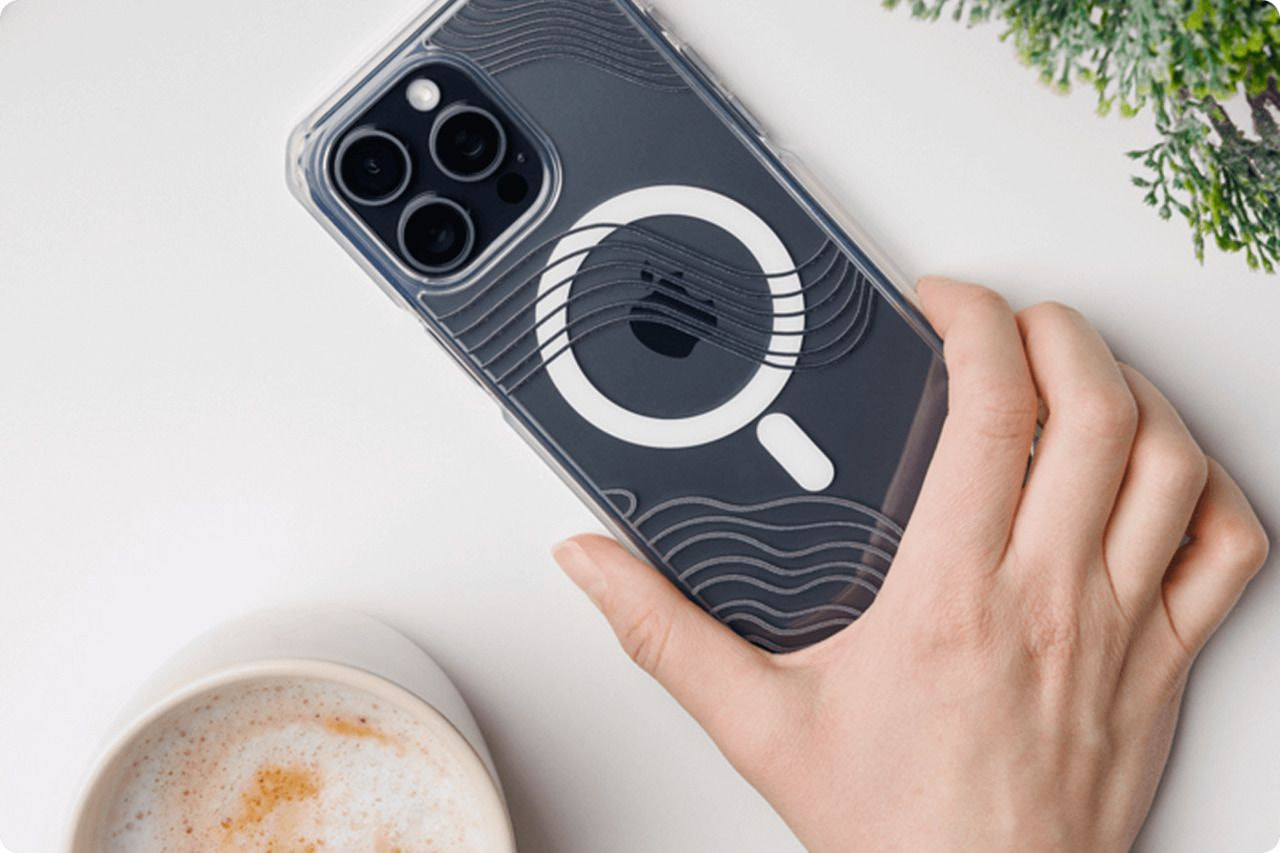
Once you’ve built a solid foundation with SEO and email, social media is the place to amplify your reach and connect directly with buyers.
“TikTok has the biggest growth potential for POD sellers in 2025/26 (and short video in general). One clever video can reach thousands of people who’d never find you otherwise. And with TikTok Shop making the “see it, want it, buy it” loop even faster, that growth potential isn’t slowing down anytime soon.”
– Rocío Anselmo, Social Media Lead
Rocío drives strategies that grow awareness, spark engagement, and keep the brand and its sellers ahead of social and eCommerce trends.
TikTok may be the frontrunner, but across all platforms, trust is the real driver – and it’s built fastest when buyers see real people enjoying your products.
“UGC is like a trust shortcut. A 10-second TikTok of someone unboxing your hoodie or showing off how they styled your mug hits harder than any ad. It feels authentic, it builds credibility fast, and one viral UGC clip can be the spark for your first big sales wave.”
– Rocío Anselmo, Social Media Lead
The beauty of UGC is that you don’t need massive budgets to get started.
“Micro-influencers are inexpensive to start with, quickly establish credibility, and allow you to repurpose UGC into advertisements, which will provide you with low-cost traffic and conversion power.”
– Dāvis Sārmiņš, Director of Growth Marketing
Whether it’s TikTok, UGC, or influencer partnerships, the key is treating social media like the search engine it has become.
“Use descriptive captions, relevant hashtags, and even on-screen or spoken keywords so your content surfaces in search. For TikTok Shop listings, titles and descriptions should be clear and keyword-rich, just like on Etsy.”
– Laura Želvytė, Head of Content
Each platform has its own language, and the sellers who adapt to that language are the ones who build consistent engagement.
“Now more than ever, content is king. Figure out what platform your audience is using and make things tailored to it: aesthetic images on Pinterest, entertaining videos on TikTok, memes on Facebook. Skipping content marketing means leaving free organic engagement on the table.”
– Elizabete Fleišmane, Video Content Manager
Leads Printful’s video strategy by combining creativity with data, delivering content that educates, engages, and drives results for POD sellers.
And if showing up on camera feels daunting, there’s good news: faceless content works just as well. What matters most is consistency.
“Pitfall to avoid: Don’t give up too early. Many successful stores needed ~80 video posts before seeing traction. Commit to daily posting – it’s free traffic.”
– Valeria Cealic, Head of Influencers and Community
As the Head of Influencers and Community, Valeria drives revenue growth by scaling influencer partnerships and building the largest POD communities.
Once you have a community, the next step is keeping the connection alive through email marketing and retention strategies.


6. Email marketing and retention
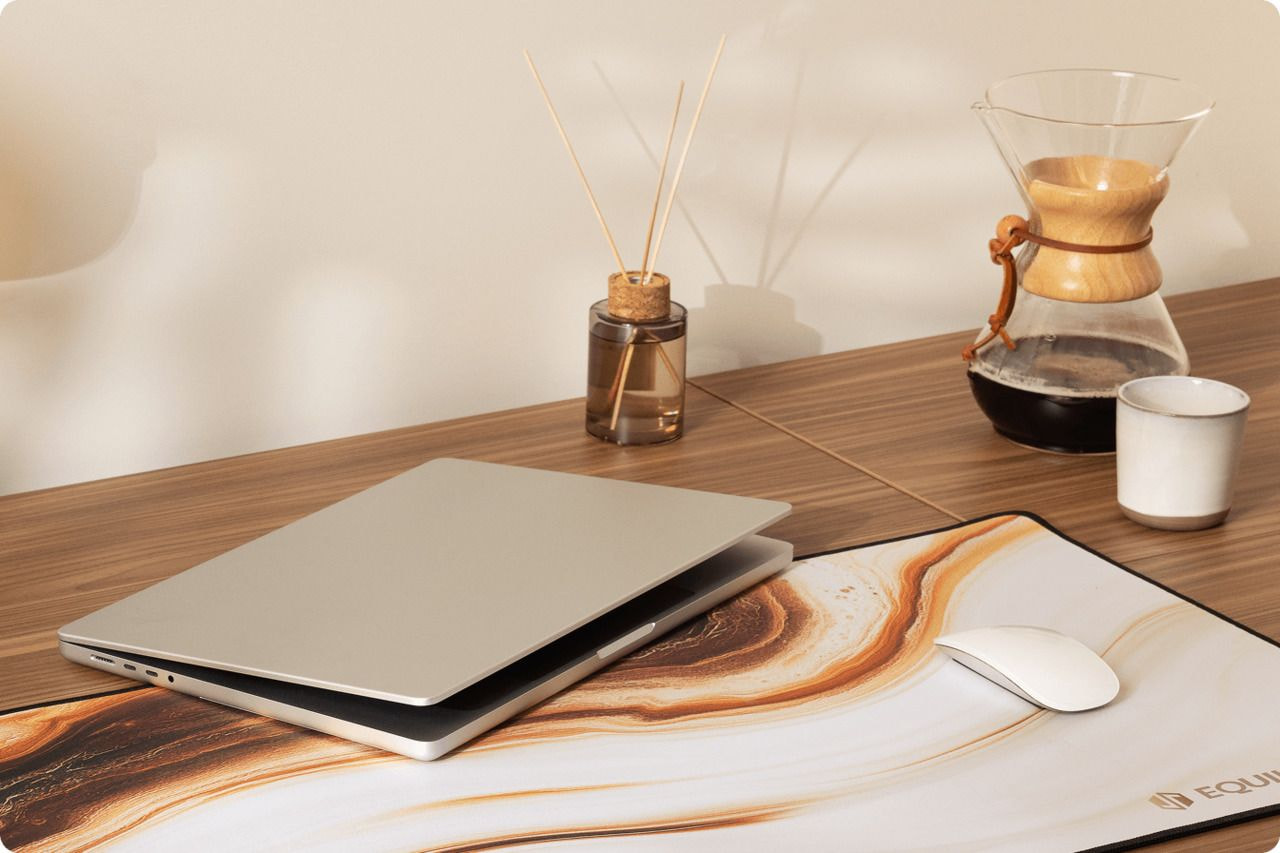
Email gives you direct access to customers without relying on social or search algorithms. The first challenge: you need a way to collect those emails.
“Run a “100 Free stickers” lead magnet of your best design. Cost is tiny, return is list growth and UGC.
Collect emails on a simple landing page, ship the sticker with a QR linking to a limited-time bundle (tee + mug), and a hashtag prompt.
Repost customer pics, add them to product pages for social proof, and automate a 3-email flow: delivery notice > style inspo > time-boxed offer.”
– Arturs Malnieks, Performance Marketing Lead
A leader specializing in paid advertising with one clear mission: helping new merchants find the best POD partner and getting them to that all-important first sale, fast.
This tactic brings new people onto your list and gives you content you can reuse. Afterward, you need a way to welcome and guide them toward becoming buyers.
“Onboarding flow is simple to set up and one of the most impactful automations.”
– Uldis Tīfenbergs, Lifecycle Marketing Lead
Email and lifecycle marketing specialist with SaaS and eCommerce experience, creating data-driven strategies that boost engagement, retention, and long-term customer growth.
An onboarding flow introduces your brand, explains what you offer, and directs new subscribers where to start. After the first sale, the next opportunity is to keep the customer engaged.
“A post-purchase email series is a great way to turn first-time buyers into repeat customers. Here’s what I’d put in it:
Social proof. Add some great reviews to show them how awesome your brand and quality are. This just seals the deal.
A discount coupon. Make it a limited-time offer so they must use it before it expires.
The email itself needs to feel like you. Speak to your customer in an authentic way and use eye-catching subject lines.”
– Ana Isabel Rincon, Lifecycle Manager
With over 8 years of experience, Ana creates lifecycle strategies that guide merchants from onboarding to retention, driving long-term success.
Retention depends on giving customers reasons to return, both through the products you offer and through your communication with them.
“Winning a new customer is expensive. Retaining existing customers is what drives profitability for your business. Once you’ve built a solid customer base, focus hard on getting them to return.
It’s about the products you pick and the marketing tactics you use to re-engage your audience.”
– Elina Siksnane, Head of Commercial Operations
Experienced people leader in product development and category management, driving growth, efficiency, and scalable systems that support POD sellers’ success.
Email creates a structure for growth: attract subscribers, guide them into their first purchase, and keep them engaged in the long term. With that in place, turn your focus to operations and fulfillment – the part of the business where customer expectations are either met or missed.
7. Operations and fulfillment
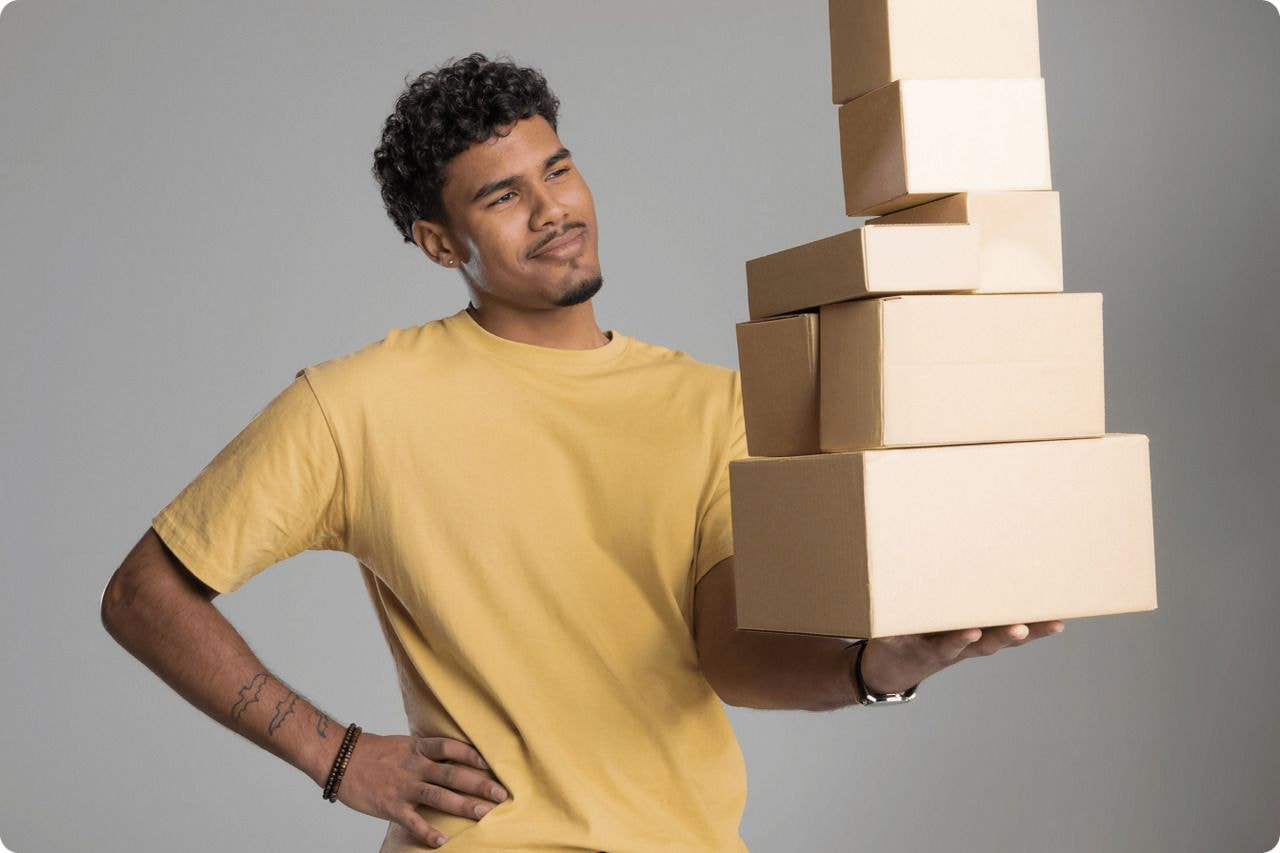
Operations is where customer expectations meet reality – how you handle this stage determines whether they return or churn. Setting clear expectations from the start is the foundation.
“Set realistic expectations. Customers will care about shipping times, product quality, and print variations. Merchants who succeed communicate clearly and transparently.
Anticipate problems, don’t react. Shipping delays, seasonal spikes, supply hiccups – these are normal in POD. Sellers who stay calm and get ahead of communication with customers win loyalty, even when things go wrong.”
– Valeria Kast, Head of Customer Support
Leads the Customer Support Team, helping creators grow their eCommerce businesses while ensuring their customers enjoy a seamless experience.
Good communication does more than prevent frustration. It reveals where customers struggle, which tells you where to improve your store and product pages.
“Many sellers don’t realize that customer support emails aren’t just a complaint source but a goldmine of customer insight. For example, if your customers keep asking you the same question about sizing or fabric, you should tackle that in how you present your items in your catalogue. Take every customer interaction as a gift to you in the form of feedback.”
– Valeria Kast, Head of Customer Support
At the same time, the operational strengths of POD itself give sellers a huge advantage.
“The beauty of POD is its time-to-market and flexibility. That advantage aligns perfectly with holidays and seasonal trends that bulk manufacturing simply can’t serve.”
– Emīls Potāpovs, Senior Merchant Success Manager
Read more: What is Print on Demand? All your questions answered
Operations may not feel as exciting as design or marketing, but it’s the part of your business that customers experience most directly. Manage it well and you’ll build lasting trust.
8. Common pitfalls of starting a POD store
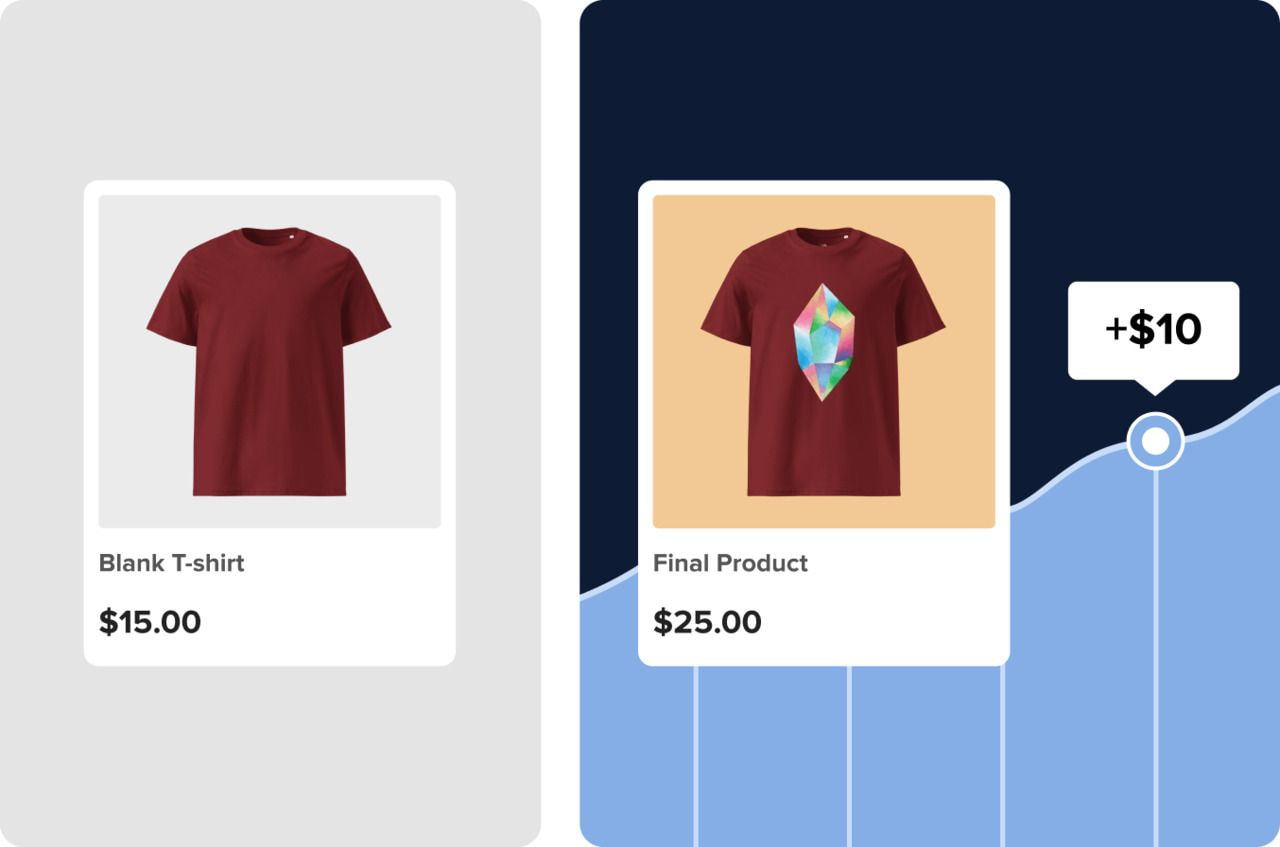
Every new seller makes mistakes. But many of these are common POD mistakes you can avoid with simple checks and clear communication.
“One overlooked challenge I keep seeing is communication. New sellers often underestimate how important it is to set clear expectations with their buyers about shipping times, product quality, and what’s “normal” in POD (like slight variations in print or packaging).
The opportunity here’s that if you do get communication right, you instantly stand out. Customers forgive a lot when they feel informed and respected, and that trust pays off in repeat sales.”
– Valeria Kast, Head of Customer Support
Missteps also happen when sellers skip diligence. What matters is whether you use problems to build credibility or erode it.
“Diligence and a positive attitude are essential. Clients expect the best from us, and when issues arise, we ensure proper follow-up – not only to address their concerns but also to prevent repeated mistakes.”
– Juan Carlos Mondragon, R&D Project Manager
Juan ensures merchants get better, more reliable products by driving innovation, overseeing testing, and introducing new technologies and materials.
Another trap is assuming that what you design on a screen will look identical in real life. Materials, print methods, and colors all behave differently, and skipping sample orders leaves sellers unprepared.
“An often-overlooked challenge is the gap between expectations and the actual product. Colors, materials, and decoration methods don’t translate perfectly from screen to reality. The best way to set yourself up for success is to get familiar with different decoration techniques and order samples.”
– Sergejs Bižāns, Sr. R&D Manager
Specializes in innovative decoration techniques and workflows that expand product options and ensure merchants can offer high-quality, reliable products to their customers.
“Pitfall to avoid: Not every design works for embroidery – too many colors/details won’t translate well.”
– Krisjanis Ozols, Director of Operations Development & Innovation
With over 8 years of experience, Krisjanis leads R&D and Quality Assurance, driving new decoration methods, improving techniques, and ensuring top product quality for merchants.
“Pro tip: Check consistency. The same design can look different across fabrics and techniques. Samples protect you from surprises.”
– Madara Priediena, R&D Manager
With expertise in textile technology and apparel production, Madara specializes in sublimation and AOP cut & sew, developing new products and refining processes.
Finally, don’t overlook the financial side. Many new sellers are creative but fail to monitor costs, exposing them when margins tighten.
“Profit and loss management can make or break a business. Monitor costs closely. Sometimes, selling at a loss is strategic if it secures a bigger share of the market. But this only works if your calculations are accurate and the business can sustain it.”
– Gvido Blaumanis, Category Management Lead
With a background in finance and product strategy, Gvido helps eCommerce merchants grow by providing trending products that strengthen their brands.
Read more: 11 Proven ways to get sales with Print on Demand
Avoiding these pitfalls requires awareness and preparation. When you plan for challenges, they stop being roadblocks and start being opportunities to improve.
9. The future of POD
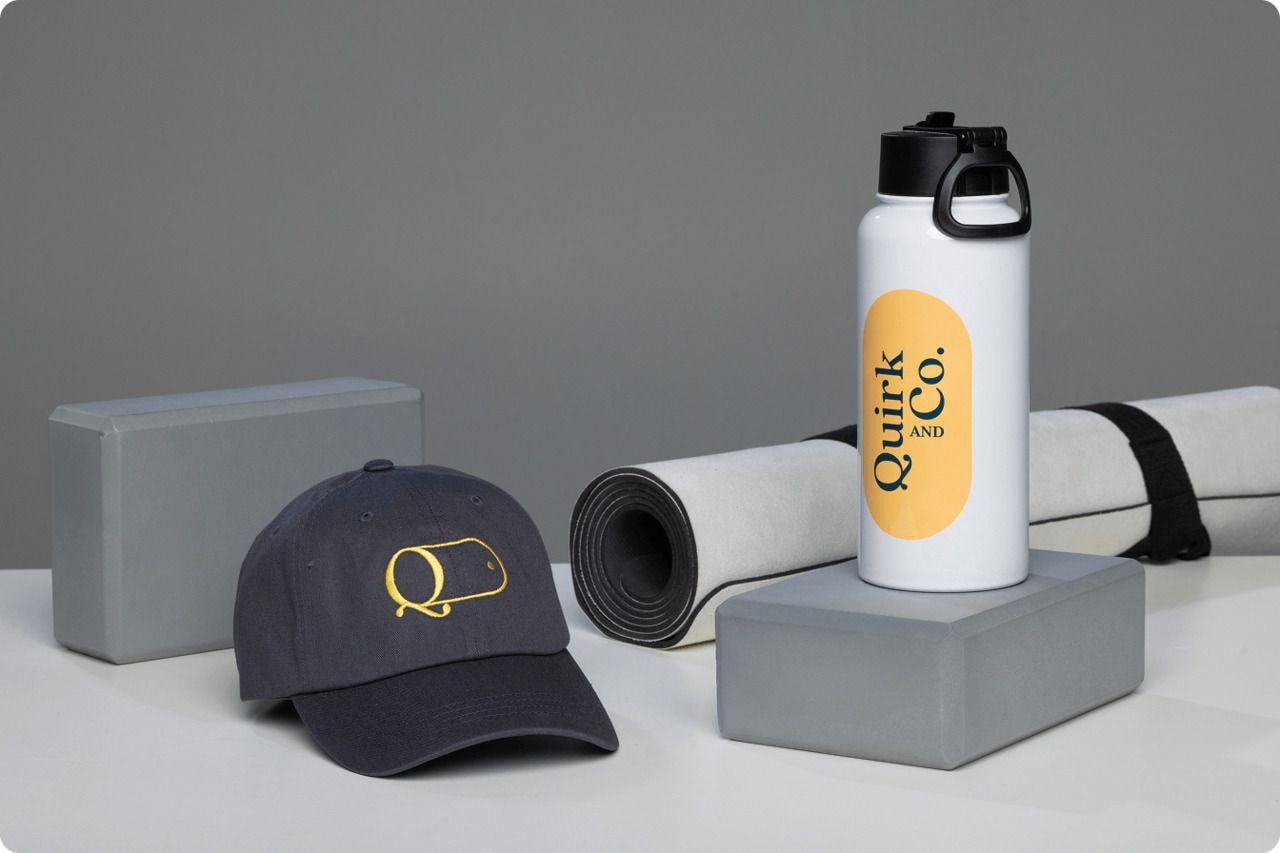
Every wave of eCommerce has its turning points, and POD is approaching one now. The future won’t be defined only by new products or sales channels, but by the tools and systems that make the model smarter and more accessible.
“Increasing AI use will drive more opportunities for POD sellers in the future. AI can be specifically leveraged to:
Better detect trends, to allow merchants to quickly capitalize on buyer demand
Automate merch creation and publishing, minimizing design time to speed up getting products to market
Enhance designs to create differentiated products in a saturated market”
– Chris Victory, Head of Partnerships
Formerly at Shopify, Chris now leads Partnerships at Printful, working with platforms to expand selling options and embed POD capabilities for merchants.
New technology isn’t just reshaping how products are made –but also where they’re sold.
“We’ll likely see an increase in POD-powered experiences embedded in platforms. By allowing creators such as artists, musicians, and others to create and publish merch directly, they’ll be able to reach more buyers than ever before.”
– Chris Victory, Head of Partnerships
This expansion signals a shift: POD is no longer a side option for sellers. As it integrates into more platforms, expectations for quality and professionalism also rise.
“Over the next 5 years, zero-inventory retail will become the default. Brands, creators, and agencies will launch lines without holding stock – using POD for core and “always-on” demand between big drops.
Premiumization will become the new norm. Expect broader, high-quality blanks (better fabrics, fits, finishes), consistent color standards, and expansion beyond tees and hoodies into cut-and-sew, embroidery, and hybrid methods (DTF printing + DTG).”
– Emīls Potāpovs, Senior Merchant Success Manager
Sellers who understand these shifts today will lead tomorrow’s market. The future is exciting, and the path forward is shaped by everyday tactics.
Read more: How to start an online store with Printful
10. Bonus advice from the experts
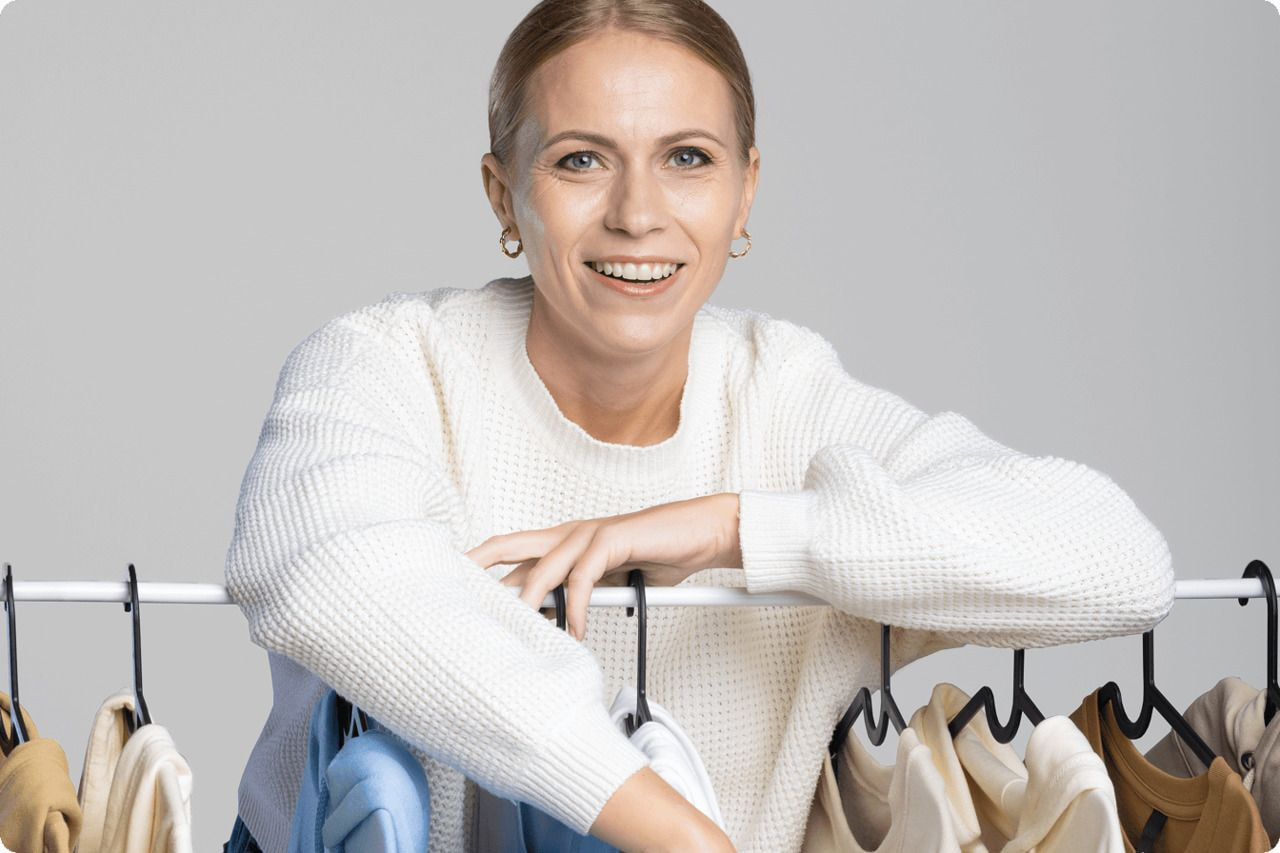
Sometimes the smaller moves, not the sweeping strategies, give sellers an edge. Use these as expert tips for new POD sellers when you plan your next launch or campaign.
“Working 1:1 with some of our largest and most successful sellers, one highly effective tactic I’ve seen deliver strong results is launching limited collections.
This can be a collaboration with another business, artist, or online creator. By making these items available only for a set period of time, sellers tap into exclusivity and create FOMO among their customers.”
– Nikita Skorodihins, Merchant Success Team Lead
His team supports some of the company’s largest and most successful merchant accounts, helping them maximize sales and scale efficiently.
Exclusivity is powerful, but presentation matters just as much. How products are shown often determines whether shoppers take a second look or scroll past.
“Pro tip: Invest in mockups. Don’t rely only on platform defaults – third-party or AI-powered mockups elevate your brand.”
– Edgars Peics, Chief Technical Officer
As CTO, Edgars leads the teams behind Printful’s secure, scalable platform, building features that empower merchants to launch and grow their businesses.
Better visuals raise the bar, but higher value also comes from what you put into the product itself.
“To stand out, I suggest impressing your customers with higher added value through:
Personalisation
High-quality blanks
Embroidery or production using direct-to-film (DTF) technology
A combination of these allows you to charge higher prices and impress customers with durable quality.”
– Edgars Peics, Chief Technical Officer
Finally, no tactic matters if your store never finds its audience. Driving traffic is still a hurdle – the most effective way to clear it is often through targeted collaborations that generate both content and credibility.
“Run a micro-creator launch in one ultra-tight niche. Give 8-12 creators (3-20K followers) each an exclusive colorway/design, 15-25% rev-share via Shopify Collabs, and a trackable UTM. Require 2 short videos + 1 story; then Spark-Ad/boost the top post for $10-$20/day for 7 days using their handle as the ad.
One niche, one hero design, many social proof angles = fast, qualified traffic.”
– Arturs Malnieks, Performance Marketing Lead
These bonus tactics seem small but pack a punch: drive urgency, boost conversion, raise margins, and fuel traffic. Together, they give your store extra momentum.
Conclusion
The expert advice for POD sellers in this guide comes from people who’ve done the messy work and know where new sellers trip up. These are real lessons learned in POD from teams who see what works at scale.
Use their shortcuts, skip a few headaches, and give yourself a better shot at building something that lasts.
Think of this as a collective “What I wish I knew about POD” list you can revisit as you grow. Bookmark this piece, pass it on to a fellow seller, and when you’re launching a POD store, Printful’s resources are waiting.



Karlina is an SEO Content Writer specialist at Printful. As a firm believer in attitude over aptitude, Karlina gives her 100% whenever she works on something new. Karlina spends her free time reading, traveling, and doing yoga.





